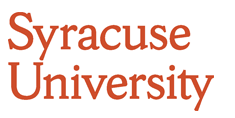Document Type
Conference Document
Date
2013
Keywords
Stereoscopic depth, correspondence problem, false matches, symmetry
Language
English
Disciplines
Behavioral Neurobiology | Cognition and Perception | Systems Neuroscience | Vision Science
Description/Abstract
Binocular vision’s correspondence problem arises when veridical interocular matches are camouflaged by false ones. This fundamental issue in stereo theory can be approached in a new way by making use of the symmetrical patterns of false or ‘ghost’ matches found within the Keplerian array of all possible matches. This ghost-match symmetry locates true matches (which live on the axes of symmetry) and reveals the shape of the surface that gave rise to them. The symmetry is a general outcome of binocular viewing of surfaces, be they frontoparallel, slanted, or curved, and the shape of the surface is described by the parameters of a small set of transformations operating across the symmetry axis. It is hypothesized that the visual system uses ghost symmetry to find true matches and recover surface shape. To see whether this signal is used, I tested a prediction of the symmetry hypothesis: In the presence of a masking pattern, small target stimuli should yield lower disparity thresholds than large targets in a depth discrimination task. Anti-correlated noise maskers fulfill the requirements for this prediction; uncorrelated noise maskers serve as a control. Observers were briefly shown a bipartite Gabor patch. The task was to judge which half of the patch was ‘nearer’. Disparity thresholds dropped as the patch was made narrower, but only in anti-correlated noise, as predicted. As the horizontal space constant of the Gaussian contrast envelope shrank from 1.5 to 0.25 degrees of visual angle, thresholds dropped 5-fold, reaching the level found for uncorrelated noise. Other experiments were also consistent with ghost symmetry’s contribution to stereo depth. This distributed and multi-scale signal supports a potentially robust approach to a correspondence solution; it also suggests new ways of combining stereo and motion signals and of understanding the physiology underlying disparity processing.
Recommended Citation
Farell, B. Solving the binocular correspondence problem with ghost matches. Journal of Vision, 13(9), 933; doi:10.1167/13.9.933
Included in
Behavioral Neurobiology Commons, Cognition and Perception Commons, Systems Neuroscience Commons, Vision Science Commons

